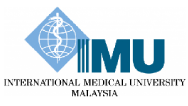Discordance between medication adherence and blood pressure control in primary care clinics in Negeri Sembilan, Malaysia: The problem of therapeutic inertia
Authors: Chun Wai Chan, Junyi Wang, Joanne Johnny Bouniu, Parampreet Singh, Cheong Lieng Teng.
ABSTRACT
Introduction: Poor adherence to anti-hypertensive agents may be a major contributor for suboptimal blood pressure control among patients with hypertension. This study was conducted to assess the adherence to antihypertensive agents using Morisky Medication Adherence Scale (MMAS-8) among primary care patients, and to determine whether the blood pressure control is associated with the level of adherence.
Methodol0gy: This cross-sectional study was conducted between June 2011 and August 2011. Adults with hypertension older or equal to aged 30 with or without diabetes were recruited from two public primary care clinics in Negeri Sembilan, Malaysia. Medication adherence was assessed using MMAS-8.
Results: Data from 231 patients were analysed, whereby 68% of them had good medication adherence but only 38.1% of the patients had their blood pressure under control. Statistical analysis failed to find correlation between adherence and blood pressure control. Twenty per cent of hypertensive subjects were on beta-blocker alone, and 37.1% of patients with either diabetes or proteinuria were not prescribed either angiotensin-converting enzyme inhibitors (ACEI) or angiotensin receptor blocker (ARB). Above half the patients (51.5%) were on monotherapy.
Conclusion: Discordance between adherence to antihypertensive agents and hypertension control is clearly shown in this study, and the likely explanation for the discordance is therapeutic inertia.
Keywords: primary care, hypertension, therapeutic inertia, medication adherence.
Citation: IeJSME 2015 9(3): 27-32

